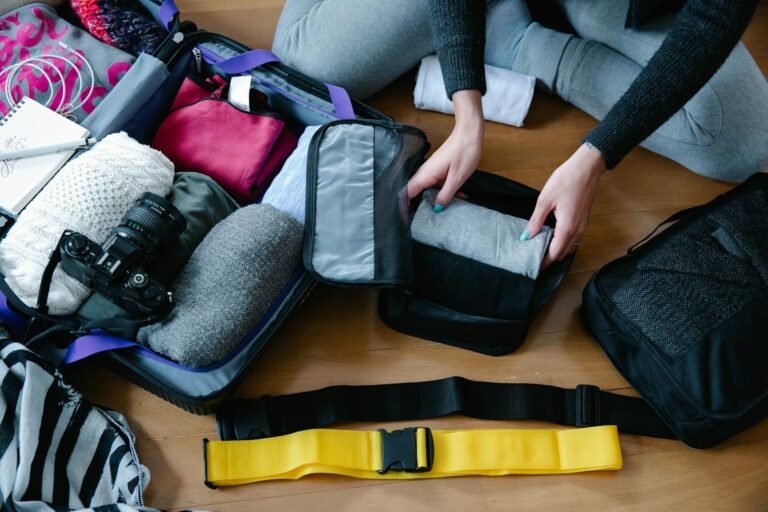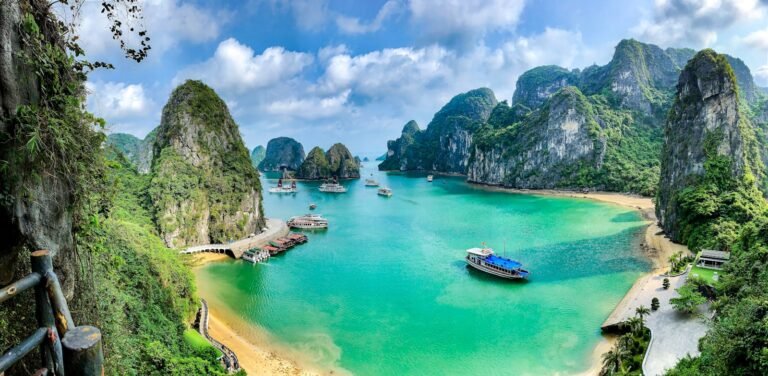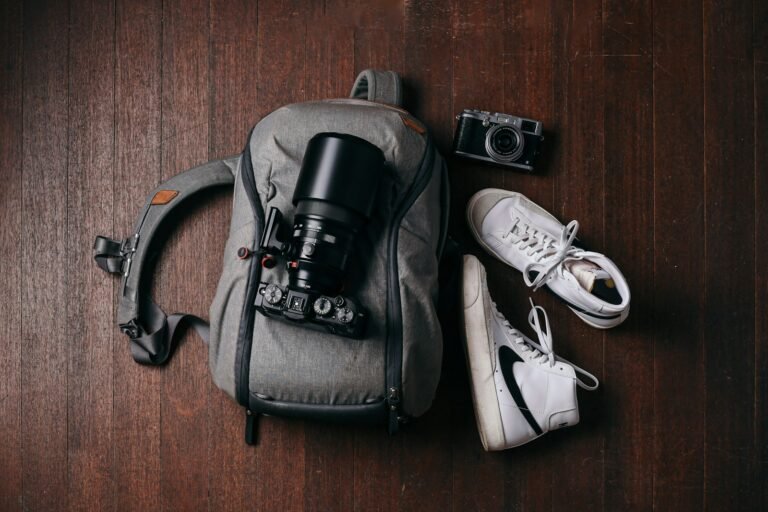Did you know you can fly between European countries for under $100 round trip? This freedom makes exploring Europe exciting. This guide focuses on what works once you arrive.
I’ve spent over a decade exploring Europe. This guide shares my top tips. Start with Viator tours for must-see sights. Then, use Rail Europe for easy travel between cities. Begin your trip with Big Bus Tours to get your bearings quickly.
Imagine visiting Algarve cliffs, Swiss mountains, and Santorini sunsets. Add a Seine cruise and a stroll from the Colosseum to Trastevere. Use tools like Skyscanner, Google Flights and Tourow for planning. Check out this expert guide for budget-friendly tips.
Looking for road trips, rail journeys, or island-hopping? The best guides are simple, specific, and budget-friendly. I’ll share tips on festivals, splurging, and stretching your budget.
If you’re still deciding how to budget your adventure, check out our guide on the Least Expensive Way to Travel to Europe — it breaks down flight deals, passes, and insider timing tips that make a big difference.
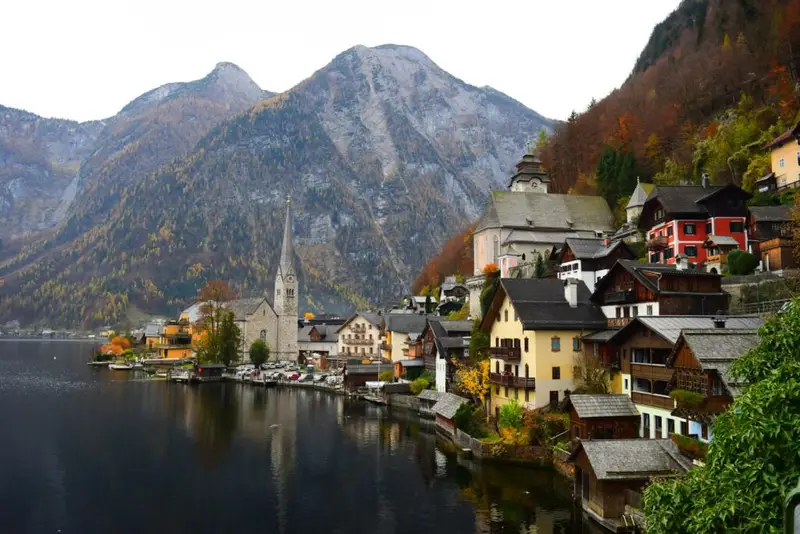
In Case You’re Skimming
- Use Viator for curated must-sees, Rail Europe for easy city hops, and Big Bus Tours for day-one orientation.
- Score cheap flights by staying flexible on dates and airports; under-$100 round trips are real.
- Lean on Skyscanner, Google Flights, and Tourow for broad searches and price alerts.
- Build rail-friendly routes like Paris–Interlaken–Rome–Barcelona to cut transit stress.
- Time trips: late spring to early fall for festivals; winter for Christmas markets and snow.
- Mix classics with offbeat gems—think Paris and Rome plus Transylvania and Kotor.
- Keep it authentic and affordable with smart lodging filters and local food detours.
Start Here: How to Use This Europe Tourist Guide for Maximum Impact
I created this guide to help you travel fast, save money, and see more. It’s like a map for exploring Europe with confidence. Follow these steps, and you’ll start strong and keep going all trip long.
Quick call to action: Book curated Viator Europe tours for must-see experiences
I start by booking one special Viator tour to set my dates. Choose something big like the Vatican, a Seine cruise, or a gondola ride in Venice. Then, add an adventure like rafting in the Austrian Alps or ATV riding in Corfu. This first step sets your pace for exploring.
Ride smart: Compare Rail Europe routes and passes for seamless city-to-city travel
Next, plan your route with Rail Europe. Look at passes and tickets, then map out your journey. Book scenic seats in the Swiss Alps or Scottish Highlands if you want. This keeps your travel smooth and budget-friendly.
First-day overview: Big Bus Tours for hop-on, hop-off orientation in major capitals
On your first day in Paris, London, or Rome, take a Big Bus Tour. It helps you get a feel for the city, spot photo spots, and plan for later. This saves time and helps you explore on foot without getting lost.
Trip type matching: City breaks, coastal escapes, road trips, and rail loops
Decide what kind of trip you want early on. Choose city breaks, coastal trips, road trips, or rail loops. Matching your trip style to your pace is key to a great trip.
Compare prices from 1,000+ global car rental companies in one place. Save money, skip hidden fees, and drive with confidence—perfect for your next trip.
Building a realistic itinerary: Timeboxing by region to avoid burnout
Divide your trip into regions and set a time limit for each. Don’t try to see everything in one month. Spend 3–5 nights in each city, add day trips, and keep travel days easy. For tips on passports, ETIAS, and health, check out this planning checklist.
- Action step: Book one Viator must-do, one Rail Europe segment, and a Big Bus Tour in your first city today. Small wins compound while exploring europe.
- Order of moves: lock season, pick icons, layer regions, add tours, then finalize budget and trains—classic europe guide travel rhythm.
Best Times to Go: Weather, Festivals, and Crowd Levels Across Regions
I plan my trips based on daylight, temperature, and crowd levels. These tips come from my own backpack travels across Europe. For more details on seasons and closures, I rely on this timing guide when setting my dates.
Late spring to early fall: Prime season for outdoor adventures and events
From May to September, I enjoy the long days and warm evenings. Activities like beach-hopping in Algarve, rafting in the Austrian Alps, and sailing in Greece are perfect. Late dinners and lively squares add to the fun.
- Paris canal cruising at golden hour is peaceful, even in peak months.
- Iceland’s Ring Road is stunning with clear roads and waterfall spray.
- Book key attractions like Vatican Museums, Sagrada Família, and Louvre well in advance.
Be prepared for the heat in the south. Start early, take a break at midday, and return at dusk. These tips help you stay cool and keep exploring when others seek shade.
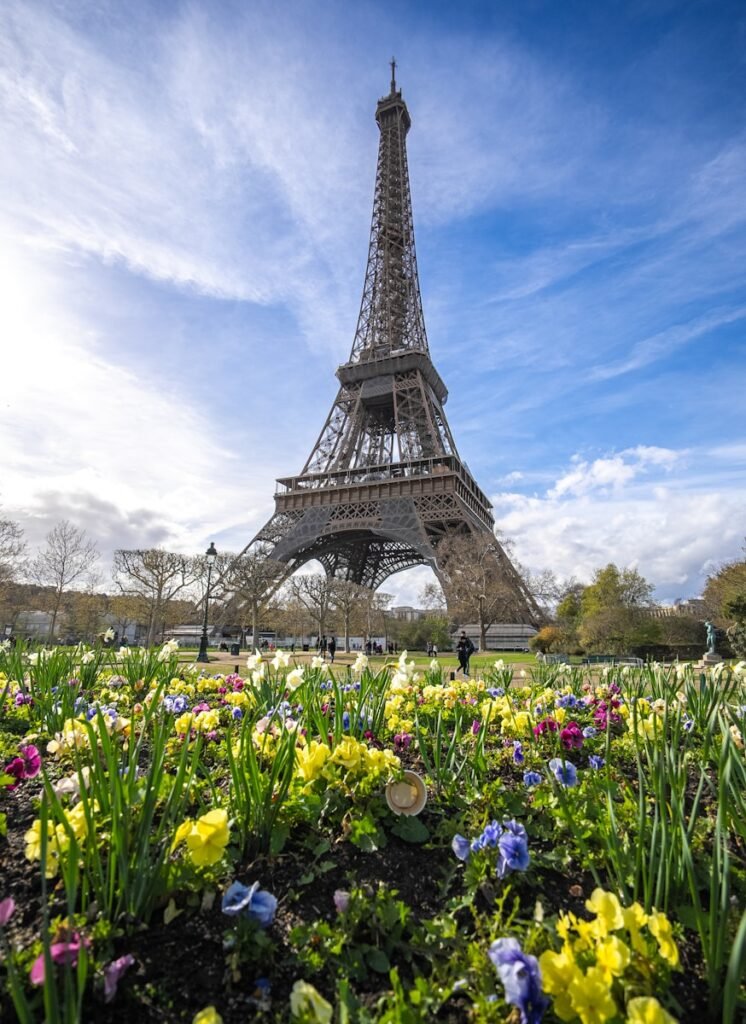
Winter magic: Christmas markets, alpine snow, and fewer crowds
Winter offers a different vibe. Crowds are smaller, lines are shorter, and city lights sparkle. Dress warmly and enjoy street treats at markets in Munich, Vienna, and Strasbourg.
- Swiss and Austrian Alps provide snow-covered views and cozy inns.
- Museums are less crowded, making same-day entry easier.
- Days are short—start early and enjoy night walks.
Hotels and flights often cost less in winter. This is great for exploring Europe without overspending. These tips help you spend on experiences, not just rooms.
Festival highlights: Oktoberfest, Venice Carnival, Pamplona’s Running of the Bulls
I plan my trips for cultural festivals. Munich’s Oktoberfest is a whirlwind of tents and music. Venice Carnival adds masks and gondolas to the mix. Pamplona’s San Fermín combines ritual, music, and packed streets.
- Book rooms months in advance for the best spots.
- Learn local customs before you arrive.
- Use trains to avoid traffic and high prices.
With these tips, you can enjoy Europe’s big events without breaking the bank.
Shoulder-season wins: Lower prices with great weather
Late April–May and September–October are my favorites. Ferries and tours run in Greece, Croatia, and Portugal, but it’s less crowded and cheaper.
- Pack layers for cool mornings and warm afternoons.
- Restaurants have room, and hosts are more available.
- Flexible days let you adapt to the weather.
My goal is balance. These tips aim for mild weather and open sights while exploring Europe at a relaxed pace and price.
Classic Icons: Paris, Rome, and Santorini Highlights
I plan this trio with a focus on hitting the icons, avoiding long lines, and leaving room for surprises. This part of the guide blends big sights with easy wins. You get the magic without the stress.
Paris essentials: Eiffel Tower, Seine cruise, and Louvre moments
I go for the clichés in Paris. I enjoy a warm crepe near the Eiffel Tower and then take a Seine cruise. I use timed entry at the Louvre to see the Winged Victory and catch the golden hour by the Tuileries.
- Morning tower views, afternoon art, twilight river light.
- Pack a light jacket for breezy decks on the boat.
- Use this stop as a quick checkpoint in your guide to europe plan.
Rome must-dos: Colosseum, Trevi Fountain, and Trastevere evenings
I balance big sights with slow time in Rome. The Colosseum and Pantheon fill the day with history. The Trevi Fountain is best early or late. At dusk, I explore Trastevere for cacio e pepe and pistachio gelato, enjoying the street music.
- Book guided Colosseum access to unlock stories under the arches.
- Carry a reusable bottle; Rome’s nasoni fountains are everywhere.
- Mark these anchors inside your europe tourist guide notes.
Santorini scenes: Caldera sunsets, whitewashed villages, and Mediterranean fare
In Santorini, I slow down. I walk Oia at dawn and follow the Fira-to-Oia trail. Evenings are for grilled octopus, tomato fritters, and Assyrtiko wine. A day sail adds hidden coves, hot springs, and sunset views from the water.
- Plan sunrise photos before the crowds roll in.
- Sturdy shoes for the cliff path; a hat for midday glare.
- Thread these moments through your guide to europe timeline.
Reserve skip-the-line entrances and guided experiences via Viator
I book key tickets early with Viator to keep my schedule intact. This includes timed Louvre entry, guided Colosseum tours, and skip-the-line Vatican access. In high season, this planning saves your day and budget.
Western Europe Wonders: France, Germany, Belgium, Netherlands, Switzerland, Austria
I plan my trips to Western Europe with a focus on efficiency and enjoyment. I use central stations, street food, and museum passes to save time and money. For more city suggestions, I check out this best travel guides for europe list before making my plans.

Food trails: Belgian waffles and chocolate, German beer halls, Swiss fondue
Belgium is a food lover’s dream, with waffles, fries, and chocolates. In the evenings, I try over 1,500 Belgian beers.
In Germany, Munich’s Hofbräuhaus is a must-visit for beer lovers. I enjoy hearty meals and explore nearby castles or visit somber sites like Dachau.
Switzerland offers fondue and raclette with stunning Alpine views. Every bite feels special here.
Architecture & art: Gaudí in Barcelona nearby, Gothic gems in Belgium
Western Europe is a treasure trove of architectural styles. Belgium’s Bruges and Ghent have stunning Gothic towers. I admire them at dawn when the canals mirror the sky.
Spain’s Barcelona is a short trip away, with Gaudí’s surreal creations. In France, I use travel guides to avoid crowds and enjoy museums and cafes.
Rail-ready routes: Rail Europe links for multi-country loops
Rail Europe makes traveling between countries easy. Central stations are close to downtown, making it easy to explore. I book my trips online and enjoy scenic views along the way.
- Munich–Salzburg–Vienna for music and cafés
- Paris–Brussels–Amsterdam for art and canals
- Zurich–Lucerne–Interlaken for Swiss Alps vistas
Scenic train rides through the Alps are unforgettable. A well-planned trip saves money and time.
City orientation: Big Bus Tours in Paris, London, and beyond
I start in big cities with hop-on, hop-off tours. This helps me get a feel for the area. Then, I explore on my own, visiting markets, galleries, and parks.
After the initial tour, I dive into local neighborhoods. I enjoy cafes and plan my museum visits. Early morning visits to museums like Musée d’Orsay keep the crowds away.
When you reach Italy, don’t miss a Pompeii Day Tour for a fascinating look into ancient Roman life — it’s one of the most immersive historic sites in Europe.
Food lovers exploring Paris can also enjoy a Paris Food Walking Tour for authentic bites and cultural flavor beyond the main attractions.
Southern Europe Sun: Greece, Italy, Portugal, Spain, Croatia, Montenegro
I love chasing light, sea spray, and street food in Southern Europe. I follow budget-friendly europe tour guidelines to explore. Each stop offers beach time and city walks, letting me enjoy the journey.
Coastal bliss: Algarve cliffs, Dalmatian Coast drives, Greek island sailing
Portugal’s Algarve is a work of art by the Atlantic. I stay in Sagres for surfing and explore Lagos coves and Ponta da Piedade. Croatia’s Dalmatian Coast drive is a highlight, with stops in Split and Omis.
Greece is perfect for sailing. I join island-hopping trips for seafood and sun. Santorini’s sunset is unforgettable. These trips follow simple europe tour guidelines, keeping the journey magical.
Cuisine to savor: Neapolitan pizza, Spanish tapas and pintxos
Southern Italy is a food lover’s dream. I search for Naples’ best pizza and stroll seaside promenades. Spain’s tapas and pintxos offer a taste adventure, moving from bar to bar.
I plan meals like mini tours. A late lunch, espresso, and sunset bite pace the day. It’s a tasty way to explore without rushing.
Adventure pockets: Sagres surf, Omis ziplining, Tara Canyon rafting
Sagres offers beginner-friendly surf. Omis has cliff-backed thrills like rock climbs and zip lines. Montenegro’s Tara Canyon offers clear water and white-water runs.
I pack light and book early to avoid heat and crowds. Simple prep saves money and allows for spontaneous swims.
Bundle island-hopping and coastal excursions with Viator
I book key days in advance and leave others open. Viator helps secure dates and prices for Greek sails, Algarve cruises, and more. It’s smart for any europe tour guidelines.
- Prioritize one anchor activity per day to stay fresh.
- Use early departures for cooler temps and softer light.
- Mix road days with water days for balance while exploring europe.
Eastern Europe Essentials: Romania, Hungary, Czech Republic, Slovakia, Poland, Moldova
I head east for big culture on a small budget. These cities offer fun without breaking the bank. Use this guide to explore Europe at your own pace. I’ve included tips to keep costs low and rewards high.
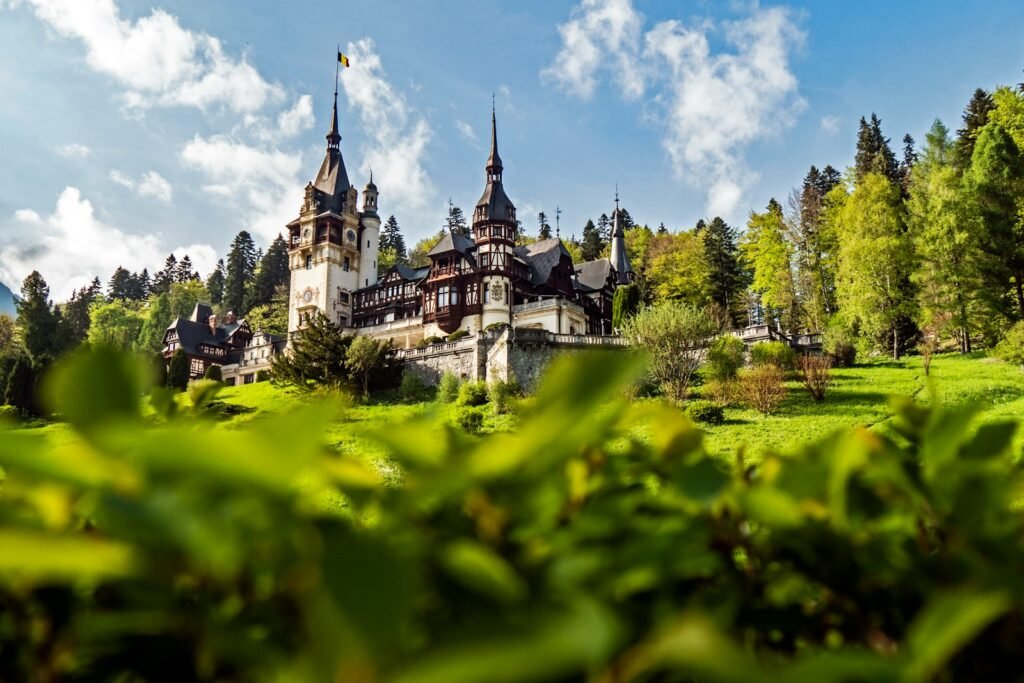
Romania is a great start. Transylvania’s fortresses and villages feel like stepping back in time. Bucharest adds bold energy with street art and cozy cafés. It’s perfect for those new to Europe.
Budapest is a must-see. Spend the morning in the Buda Castle District for stunning views. Then, head to Pest for lively markets and ruin bars. These tips help you enjoy both sides of the city without rushing.
Prague and Bratislava are like fairy tales come to life. Prices are lower than in Paris or Amsterdam. Kraków mixes medieval charm with WWII history, while Warsaw offers museums and modern cafes. These places are great for those looking for value.
- Budget-friendly brilliance: Explore old towns, enjoy free views, and try affordable food.
- Transylvania charm: Discover castles, cobbled streets, and misty landscapes perfect for photos.
- Budapest balance: Relax in thermal baths during the day and admire the Danube skyline at night.
- Flight hacks: From Bucharest, Ryanair and Wizz Air offer cheap flights to many European countries.
To visit multiple countries, start in Bucharest. Take the night train to Budapest, then to Bratislava and Prague. End in Kraków or Warsaw before returning west. These tips make traveling between countries easy and affordable.
Moldova is a laid-back addition. Chisinau’s green boulevards and nearby wineries offer a relaxing experience. It’s a great choice for those seeking authentic, off-the-beaten-path destinations.
Northern Europe Routes: Baltics, Scandinavia, UK, and Iceland
This part of the map is special because it’s perfect for slow travel. My europe tourist guide notes are full of short trips, clear budgets, and scenic paths. The best travel guides for europe say to plan lightly, take lots of photos, and be ready for weather changes.
Begin with a light day bag, a transit card, and a reliable camera. Carry cash for markets and use cards for travel. Buses, trains, and ferries make it easy to visit many places.
Baltic old towns: Estonia and Latvia’s photogenic cores
In Tallinn, I explore from Toompea Hill to Town Hall Square at dawn. The streets are quiet, and the light is warm. In Riga, the Art Nouveau buildings near Alberta iela are stunning, and the cafés are cozy. My tip: go for a blue-hour walk to avoid crowds and get great photos.
- Climb a tower for a sweeping view.
- Break for rye bread and local cheese.
- Save a night for live folk music.
Scandi landscapes: Alpine-like fjords and design-forward capitals
Norway’s fjords are like the Alps by the sea. I take a boat ride in Nærøyfjord and then hike for amazing views. Copenhagen and Stockholm mix modern design with cozy neighborhoods. For the best travel guides for europe, check out design areas and waterfront walks.
- Pack layers; weather flips fast.
- Book a sauna session by the harbor.
- Try local seafood at a market hall.
Iceland by road: Ring Road van life, waterfalls, and hot springs
I rent a camper van and drive the Ring Road, stopping when the light is perfect. I keep my distance from wild horses and watch out for moss fields. Hot springs are great for relaxing after hiking. My route: start on the South Coast, then head north for more space and stars.
- Fuel up early; stations can be sparse.
- Carry a paper map as backup.
- Watch wind forecasts before crossing bridges.
UK staples: London icons and nearby canal towns
I start with Big Ben views, a Thames walk, and a quick Big Bus Tour. Then, I head to canal towns like Guildford or Bath for calm days and pub lunches. The best travel guides for europe suggest seeing the big sights first, then relaxing by the water.
For those who love cruises, combine a northern sailing with a Mediterranean trip. This mix keeps costs down and makes the most of your time.
Exploring Europe by Rail: Smart Itineraries and Scenic Journeys
Trains are great for getting to city centers easily. They offer clear views and plenty of space. This makes traveling through Europe smooth and stress-free.

Why rail: Convenience, views, and central station arrivals
Stations are close to landmarks, so I avoid long airport lines. The big windows make the trip feel like a show. I pack light, board early, and enjoy a coffee as the view changes.
- City to city with no baggage drama
- Frequent departures and clear timetables
- Simple connections that boost exploring europe momentum
Signature rides: Swiss Alps panoramas and Scottish Highlands
The Alps and Highlands offer breathtaking views. Interlaken routes pass by lakes and glaciers. Scotland’s Highland stretches are timeless.
- Centovalli Railway for cliff-edge valleys and stone villages
- Norway’s Flam Railway for fjord-to-mountain drama
- Portugal’s Douro line for vine-clad slopes and river bends
Passes and planning: Rail Europe tools and seat reservations
I compare fares to passes and book seats when needed. The Eurail One Country Pass is great for a single country. Night trains save on hotels.
- Use Rail Europe to check timetables and cabins
- Validate tickets per country rules and carry ID
- Book early on national sites like Deutsche Bahn or ÖBB to cut costs
For more tips, check out this Europe by train guide. It covers passes, scenic lines, and sleeper options.
Connector cities: Stitching Paris–Interlaken–Rome–Barcelona
This loop is a favorite of mine. Start in Paris for a Seine cruise and museums. Then head to Interlaken for lake walks and Jungfrau views.
Next, visit Rome for the Colosseum and Vatican Museums. End in Barcelona for Gaudí’s works and beaches. Night trains and local transport make exploring flexible and affordable.
Top Must-Do Experiences: Curated, Can’t-Miss Activities
I’ve curated this list from unforgettable trips. It’s perfect for both first-timers and those returning to Europe. Follow these guidelines to plan your trip, avoid crowds, and save money during busy seasons.
Sail the Greek Islands: Seafood feasts and Aegean breezes
Island-hopping in the Cyclades is a feast for all senses. I choose small boats for swim stops, grilled octopus, and stunning sunsets. Book ahead in Mykonos, Naxos, or Paros to make the most of your trip.
Seine River cruise: Icon-spotting from the water in Paris
Seeing the Eiffel Tower and Notre-Dame at sunset is magical. I buy my ticket just before sunset to avoid crowds. Check europe tour guidelines for the best boarding spots in Paris.
Vatican access: Sistine Chapel with skip-the-line timing
Early entry makes Rome better. Skipping the line lets me enjoy Michelangelo’s ceiling. Follow europe tour guidelines for a smooth visit, and plan St. Peter’s Basilica afterwards.
Venice gondola: Iconic serenade through historic canals
Yes, it’s a cliché—but it’s worth it. The views of palazzi and bridges are unmatched. Book outside peak hours and confirm your route before boarding.
Adventure hits: Austrian Alps rafting, Croatia canyon ziplines
White-water rafting in the Austrian Alps is exhilarating. The Cetina River zipline offers wild views. Check europe tour guidelines for gear and insurance, and book with Viator to stay on schedule.
- Want more ideas? I keep a bookmark to this helpful experiences in Europe roundup when mapping routes.
- For peak dates, reserve at least two weeks out and confirm cancellation windows.
“Travel light, book smart, and leave room for serendipity—your memories will thank you.”
City Orientation Made Easy: Hop-On, Hop-Off Strategies
I start day one with Big Bus Tours to get a quick feel for the city. The routes cover main sights and show how areas connect. This helps me plan my time wisely, following the top travel guides for Europe.
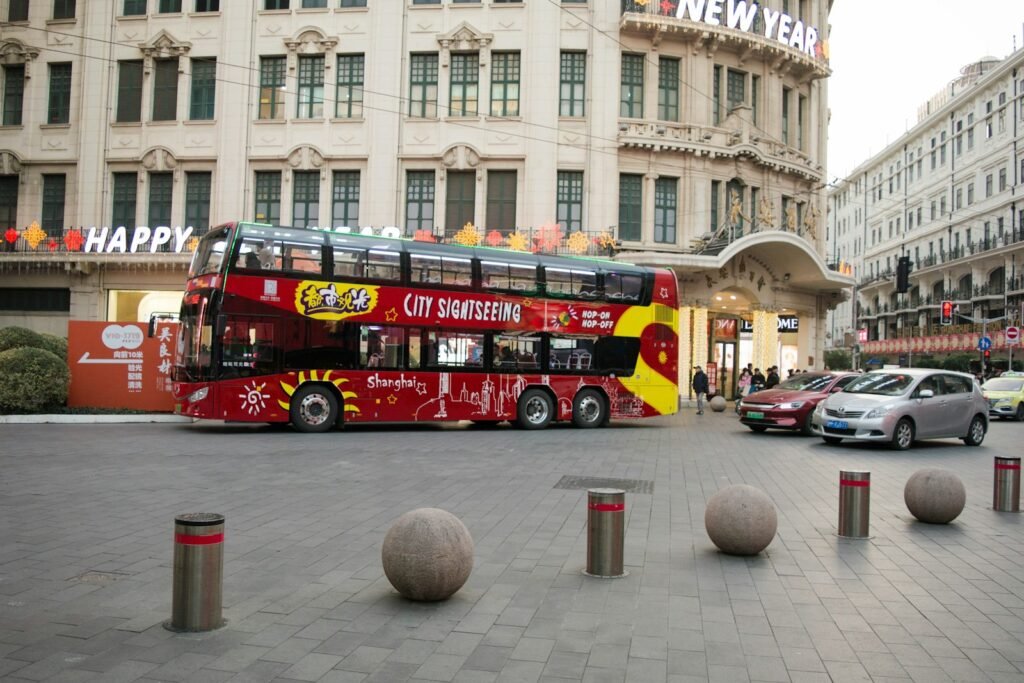
Why start with Big Bus Tours: Mapping neighborhoods fast
I ride a full loop without getting off first. I see how the Louvre and Marais line up, and where Trastevere meets the Tiber. This helps me plan my route and avoid going back and forth.
- Track timing: note traffic patterns by hour.
- Tag hubs: central stops near metros or tram links.
- Log must-return spots for golden-hour photos.
This method is a smart, affordable way to use travel guides for Europe. It helps me understand the city’s flow in real-time.
Photo stops vs. deep dives: Planning your revisit list
On the loop, I mark quick photo spots like Eiffel Tower views and the Colosseum’s arches. Then, I go back for deeper experiences like Montmartre walks and Trastevere trattorias.
- Snap list: fast hits you can capture in minutes.
- Return list: museums, food tours, and long strolls.
- Route merge: link nearby sights to save steps.
This approach helps me avoid feeling overwhelmed. It fits classic Europe travel suggestions into my tight schedule.
Combo tickets: Pair buses with river cruises or museum entries
Combos save money and time. In Paris, I pair the bus with a Seine cruise for a new view. In Rome, I match the bus with Vatican Museums entry. In London, I add Tower of London access to avoid long queues.
- Bus + river: Paris and Budapest shine at dusk.
- Bus + museums: prioritize skip-the-line windows.
- Bus + neighborhood walks: cap the day with local eats.
Used right, these bundles follow the best travel guides for Europe. They simplify smart travel suggestions into one easy plan.
Beaches, Coasts, and Island Life: Algarve to the Adriatic
I love chasing shorelines when I travel in Europe. This guide is your quick guide for sunny days and sea caves. Pack light, move often, and let the tides guide you.
Algarve highlights: Ponta da Piedade and Lagos coves
The drive from Lagos to Ponta da Piedade is like a moving postcard. You’ll see arches, sea stacks, and tiny coves at every turn. I park at the lighthouse, walk down steps, and then take a small boat to explore grottoes.
For planning, I check out guides like this best beaches in Europe resource. Then, I plan stops for the best golden-hour photos. Don’t forget water shoes and a dry bag for easy swims.
Sagres surf scene: Lessons, breaks, and scenic cliffs
Sagres is perfect for its rugged edge and steady waves. Amado Beach is great for lessons with its sandy bottom. After surfing, I hike along cliffs for stunning views and quiet spots for picnics.
Here’s a budget tip: book surf gear in town, not at the beach, to save money. Even in summer, a light windbreaker is useful when the Atlantic breeze picks up.
Croatian coastline: Split, Makarska, and island ferries
Driving from Pula to Split and down to Makarska is a joy. I plan swims at pebbled bays and detours for viewpoints. In Omiš, ziplining through canyons adds excitement between beach hours.
Ferries make exploring Europe by sea easy: hop from Split to Hvar or Brač, then return for sunset on the Riva promenade. Remember to use reef-safe sunscreen; the water is clear, and rocky entries reveal neon-blue coves.
Greek island hopping: Tours, charters, and DIY options
Greece offers three easy paths. You can join a day tour, charter a sailboat, or go DIY by ferry. I mix it up: ferry to Santorini for views, then fly to Corfu for ATV adventures and secret coves.
- Tours: easy logistics, set routes, no stress.
- Charters: private pace, hidden bays, split costs with a crew.
- DIY: flexible timings, local tavern stops, budget control.
When exploring Europe’s coasts, don’t forget water shoes, a compact dry bag, and a sun hat. With these essentials, I’m ready for any adventure.
Food and Drink Trails: Tapas, Pizza, Chocolate, and Beer
I plan my meals first, then my sightseeing. This way, I save money and enjoy tasty nights. I check the best travel guides for europe and then explore freely, following the smell of food.
Spain after dark: Tapas and pintxos culture
In Spain, I eat late to match the local vibe. I start with a vermut, then move from bar to bar. In San Sebastián, pintxos are the stars—small, tasty bites on toothpicks.
- Grilled prawns, jamón Ibérico, and gildas for a salty kick.
- Order one or two at each stop, then move on with the crowd.
- Keep cash handy and stand at the bar for faster service.
For more food adventures in Naples, Porto, Brussels, Bordeaux, and Vienna, check out this food-focused city guide. It’s perfect for any europe guide travel plan.
Italy’s originals: Neapolitan pizza from Naples to Salerno
My pizza quest is simple: I seek out Margherita or Marinara. In Naples, the crust is perfect, the center soft, and the basil fragrant.
- Seek San Marzano tomatoes and buffalo mozzarella for the real deal.
- Ride the local train to Salerno for fewer queues and seaside views.
- Take a hands-on class to master the dough stretch.
I note each pizza in my best travel guides for europe journal. This way, I can compare flavors and prices easily.
Belgian delights: Waffles, fries, chocolate, and 1,500+ beers
Belgium keeps me fueled all day and night. I start with a waffle, grab fries at lunch, and search for pralines in the afternoon.
- Sample Trappist ales and lambics; many bars list dozens of labels.
- Pair dark ales with chocolate for a rich finish.
- Rotate tastings to keep costs low and palates fresh.
This pace fits any europe guide travel plan and keeps me going without spending too much.
Munich moments: Hofbräuhaus, markets, and day-trip ideas
In Munich, I enjoy a liter stein at Hofbräuhaus, then explore Viktualienmarkt. Sausages, pretzels, and cheese stalls set the scene for a full day.
- Plan a day trip to Neuschwanstein for alpine views between meals.
- Visit Dachau Memorial Site to add context and reflection to the journey.
- Use transit day passes to link markets, beer halls, and museums.
I jot down my favorite routes in my best travel guides for europe journal. This makes it easy to follow them again next time.
Budget and Logistics: Saving on Flights, Lodging, and Transit
I stretch every dollar with a simple plan. I pick value hubs, book at the right time, and keep transit flexible. I use europe tour guidelines and my own notes from seasons on the road. These tips will help you save money without sacrificing comfort.
Choose smart destinations: Poland, Slovakia, Romania value
I start in Kraków, Bratislava, or Cluj-Napoca for low prices and rich culture. Historic squares, forest hikes, and hearty bakeries cost less than in Zurich or Geneva. Follow europe tour guidelines to weigh daily budgets before you book.
My europe travel suggestions: plan museum days and day trips first, then match neighborhoods where meals are cheaper. Trams and rideshares are wallet-friendly, so base near a transit line.
Backpacking basics: Hostels, buses, and trains
I mix hostels with budget hotels and grab regional buses for short hops. Night trains save both time and a room, which doubles the value. I compare dorms with private rooms; sometimes the gap is tiny, so I upgrade.
- Use lockers and pack a light day bag.
- Ride regional trains off-peak for lower fares.
- Join free walking tours and tip well.
For quick price scans and broad options, I check a single hub that can compare flights and stays across trusted partners before I lock plans.
Cheap intra-Europe flights: Ryanair, Wizz, and route hubs
For fast jumps, I book Ryanair or Wizz Air with a small backpack and print the boarding pass. Bucharest often wins as a hub, with dozens of Wizz routes plus Ryanair links across Italy, Austria, Belgium, Greece, Ireland, Croatia, France, Spain, the Netherlands, Sweden, Poland, and the UK.
Stick to europe tour guidelines like checking secondary airports and timing midweek departures. My europe travel suggestions also include adding 3–4 hours for transfers when flying from outlying fields.
Timing buys: Shoulder-season deals and advance bookings
I aim for April–May and September–October for softer prices and open calendars. Book major trains and top attractions a few weeks ahead in peak months. You will save more than you think with early slots.
Stack points with a travel card, then redeem for flights or hotel nights on long legs. Keep alerts on pricing dips, and lock flexible rates when the gap is small. These europe travel suggestions pair well with practical europe tour guidelines to keep your plans lean and stress-free.
Hidden Gems and Offbeat Ideas: From Kotor Walls to Bucharest Grit
I love exploring the quiet spots in Europe. This part of my guide is full of hidden treasures. Look for high views, clear rivers, and towns that feel like home. Remember to pack light, stay curious, and be flexible with your plans.
Kotor and Tara Canyon: Walls, rafting, and UNESCO scenery
My journey begins at Kotor’s medieval walls at dawn. The Bay of Kotor shines, and the views are breathtaking. Next, I visit Tara Canyon, a UNESCO-listed gorge with crystal-clear water.
Rafting here is an adventure for all. Guides handle the rapids while you enjoy the scenery. It’s a must-try for budget travelers.
Corfu by ATV: Viewpoints and secret coves
In Corfu, I rent an ATV to explore. I ride to ridge-line lookouts and hidden beaches. Don’t forget your helmet, sunscreen, and a map.
Stop for figs and a swim, then find the next cove. This route is perfect for those seeking simple thrills and stunning views.
Bucharest perspective: History, resilience, and friendly locals
Bucharest is raw and real. I walk from the Palace of the Parliament to Revolution Square. Each step reveals the city’s history.
Cafés are lively, murals are vibrant, and locals are welcoming. I also visit Transylvanian villages and castles. It’s a journey that touches the heart.
Northern Spain detours: Coastal towns beyond the crowds
I prefer the Bay of Biscay’s quiet towns over the busy spots. Enjoy seaside walks, surf culture, and fresh seafood.
- Visit San Sebastián’s pintxos bars between beach walks.
- Explore Hondarribia’s colorful lanes and fishing port.
- Watch the sunset in Getaria and try grilled turbot.
These places are ideal for a slow travel experience. You’ll find fewer crowds, richer flavors, and unforgettable nights.
For those seeking comfort and style, our Luxury European Tours guide shares curated experiences that blend elegance, culture, and convenience — perfect for special occasions or once-in-a-lifetime trips.
The Bottom Line
I keep Europe simple and unforgettable. I choose my season and pick 3–5 must-do moments. These include Greek island sailing and a Vatican visit.
I also plan a Seine River cruise and a gondola ride in Venice. Whitewater rafting in the Alps is another highlight. I connect regions with Rail Europe for easy travel.
I add an offbeat stop like Transylvania or Kotor to keep costs down. This makes my trip memorable and affordable. It turns a guide to europe into a real plan.
Day one, I use Big Bus Tours to get to know the city. I book popular spots with Viator to save time and money. Midway, I reassess my plans.
I might cut a crowded spot or add a food night in San Sebastián. This balance is key to the best travel guides for europe. It’s possible on a tight budget.
When it all works, the trip flows smoothly. I travel from Paris to Interlaken to Rome to Barcelona by rail. There’s room for a surprise stop that makes it mine.
Use this guide to europe as a starting point. Then, tailor it to your pace and budget. Europe is full of surprises for those who plan well.
Ready to start your European adventure? Book a Viator Europe tour and plan your rail travel. Add a Big Bus Tour to your first city. The best travel guides for europe are just a step away!
Compare prices from 1,000+ global car rental companies in one place. Save money, skip hidden fees, and drive with confidence—perfect for your next trip.



